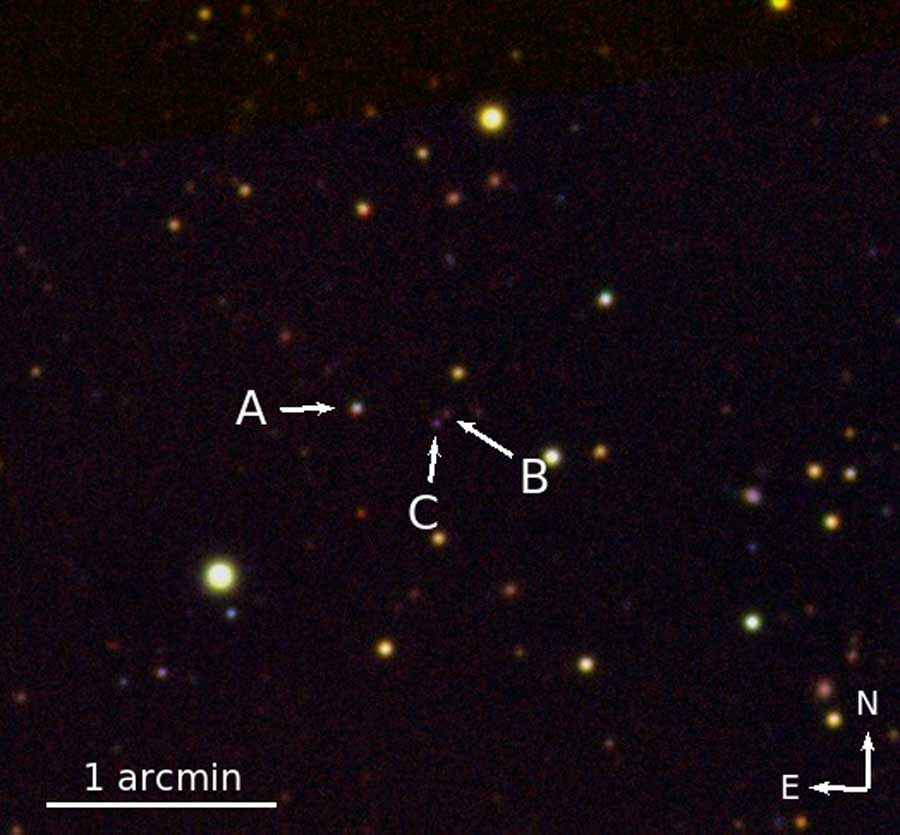Quasars are extremely bright and powerful sources of energy that sit in the center of a galaxy, surrounding a black hole. In systems with multiple quasars, the bodies are held together by gravity and are believed to be the product of galaxies colliding.
It is difficult to observe triplet quasar systems because of observational limits that prevent researchers from differentiating multiple nearby bodies from one another at astronomical distances. Moreover, such phenomena are presumed to be rare.
The team led by Emanuele Farina of the University of Insubria in Como, Italy, combined observations from the New Technology Telescope of the European Southern Observatory at La Silla, Chile, and from the Calar Alto Observatory in Spain with advanced modeling. This enabled them to find the triplet quasar, called QQQ J1519+0627. The light from the three quasars has traveled 9 billion light-years to reach us, which means the light was emitted when the universe was only a third of its current age.
Advanced analysis confirmed that what the team found was, indeed, three distinct sources of quasar energy and that the phenomenon is extremely rare.
Two members of the triplet are closer to each other than the third. This means that the system could have been formed by interaction between the two adjacent quasars, but was probably not triggered by interaction with the more-distant third quasar. Furthermore, no evidence was seen of any ultraluminous infrared galaxies — galaxies with strong emission in infrared light — which is where quasars are commonly found. As a result, the team proposes that this triplet quasar system is part of some larger structure that is still undergoing formation.
“Honing our observational and modeling skills and finding this rare phenomenon will help us understand how cosmic structures assemble in our universe and the basic processes by which massive galaxies form,” Fumagalli said.
“Further study will help us figure out exactly how these quasars came to be and how rare their formation is,” Farina said.










